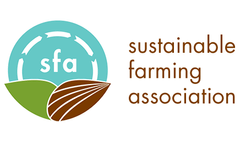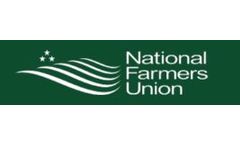Tillage Systems Articles & Analysis
30 articles found
To ensure sustainable crop production, the implementation of a method like conservation tillage is vital. Conservation tillage is a tilling process that leaves at least 30% of the soil surface covered by residue after planting. ...
ByGrowers
When developing a nutrient management plan a good place to start is with the 4Rs system: the Right rate, the Right source, the Right placement, and the Right timing. ...
Furrow irrigation is a production system for rice that has become more popular in recent years. It was interesting that people used the furrow-irrigated rice- production system rather than the conventional flood-levee system to try to win the contest. There was no real difference between the results of the two systems, which is ...
While reading this article I noticed #6 in the list includes cover crops and no till. We often talk about the very same benefits discussed in number six, but the important lesson here is the frame. First, the opening or introductory message is NOT about cover crops or soil health. As much as we all love to delve into those topics, the majority of producers do not (I know, hard to believe, but ...
Amisy Farming Machiney supplies all kinds of farming machines from threshing machines to tillage machines. About Amisy Machinery-Farming Machines Manufacturer Amisy Machinery was established in 2000, with years of experience in farming machines research and design. It became a respected manufacturer and main exporter in the agricultural field. Amisy Machinery has given international farmers ...
The objectives of the current study were to 1) determine the best tillage practice (conventional versus conservation tillage) in terms of grain yields and potential environmental risk, 2) assess insecticidal exposure using concentrations measured in soil and runoff water and sediments, 3) compare measured insecticidal concentrations to predicted concentrations ...
Tree lines are cleared and wet areas drained, turning 120-acre farms into 120-acre fields. Innovations in tillage equipment, with supposed conservation intentions, appear to be encouraging more tillage and leaving less crop residue. ...
Our objective was to determine the effect of tillage system, crop rotation, and N fertilization on soil organic carbon (SOC) storage in the 0- to 90-cm profile in a long-term (20-yr) experiment established in 1986 on a rainfed Mediterranean Vertisol in southern Spain. The treatments studied were: conventional tillage (CT) vs. ...
We conducted a 3-yr field study on a Dothan loamy sand in southeastern Alabama to develop a conservation tillage system for integrating peanut with winter-annual grazing of stocker cattle under dryland conditions. Winter-annual forages and tillage systems were evaluated in a strip-plot design, where winter forages were oat (Avena ...
Experimental factors and respective treatments were: tillage system (no-tillage vs. conventional tillage) and glyphosate application (none vs. 0.113 kg a.i. ha–1). Year x tillage system x glyphosate interactions were apparent in the results. ...
-wheat rotation in southern Germany. Conventional tillage (CT) and reduced tillage systems provided comparable economic returns. The systems of reduced tillage required higher surface-dribbled urea ammonium nitrate solution (UAN) fertilizer to corn and potato to be as efficient as the CT system. ...
Cover crops in direct seeding mulch-based cropping (DMC) systems can be an effective tool to optimize N management for crop production in the Brazilian cerrados. The objective of this study was to determine the effect of four cover crops on maize (Zea mays L.) grain yields in two fields that had been under DMC for 3 and 14 yr. We hypothesized that cover crops would optimize N supply to the maize ...
As economic conditions deteriorated, cotton (Gossypium hirsutum L.) producers have looked to improve profit margins by reducing inputs while maintaining yields. Pairing the yield benefits from early planting with the input reductions from conservation tillage might help accomplish those goals. The objective was to determine how growth, lint yield, and fiber quality were impacted by planting ...
Cover crops in direct seeding mulch-based cropping (DMC) systems can be an effective tool to optimize N management for crop production in the Brazilian cerrados. The objective of this study was to determine the effect of four cover crops on maize (Zea mays L.) grain yields in two fields that had been under DMC for 3 and 14 yr. We hypothesized that cover crops would optimize N supply to the maize ...
Improved topsoil structural quality is expected under no-till farming, but soil physical constraints can develop under continuous no-till. Our objectives were: to evaluate the properties of loam, silty loam, and silty clay loam soils under various management practices on a regional scale; to clarify the relationship between soil organic matter pools and soil physical properties; and to find a ...
Nitrogen mineralization occurring near the soil surface of agroecosystems determines the quantity of plant-available N, and soil enzymes produced by microorganisms play significant roles in the N mineralization process. Tillage systems may influence soil microbial communities and N mineralization enzymes through alterations in total soil C and N. ...
Strip-tillage (ST) systems have been proposed as an alternative that may provide many of the conservation benefits of NT while maintaining productivity and economic returns. ...
Wheat hay and millet hay yields were not significantly different across tillage systems. Economic analysis was conducted for both a machinery complement sized for a 260-ha farm and a machinery complement sized for a 1036-ha farm. For both farm sizes and both tillage systems, the early-September-planted dual-purpose ...
Data were collected from two locations in Colorado and two in Texas that had multiple N fertilizer treatments, varying tillage systems, and different growing seasons. Cob:grain yield ratio, cob:ear ratio, cob:stover ratio, and cob N and C uptake were determined for each site. ...
We evaluated the 21-yr effect of tillage and cropping sequence on dryland grain and biomass (stems + leaves) yields of spring wheat (Triticum aestivum L.), barley (Hordeum vulgare L.), and pea (Pisum sativum L.) and soil organic matter at the 0- to 20-cm depth in eastern Montana, USA. ...








